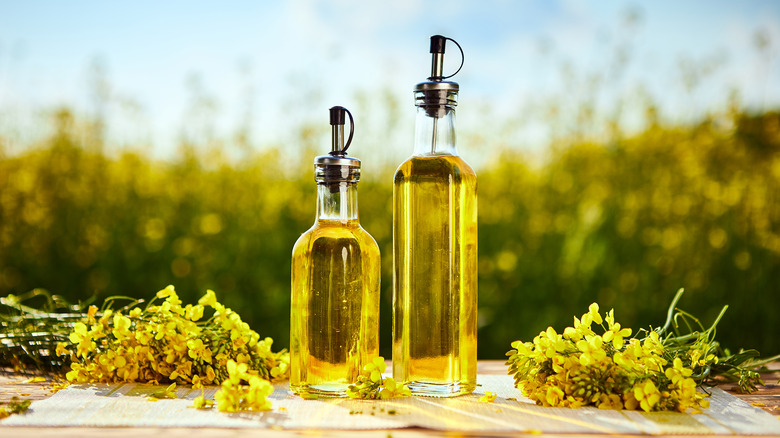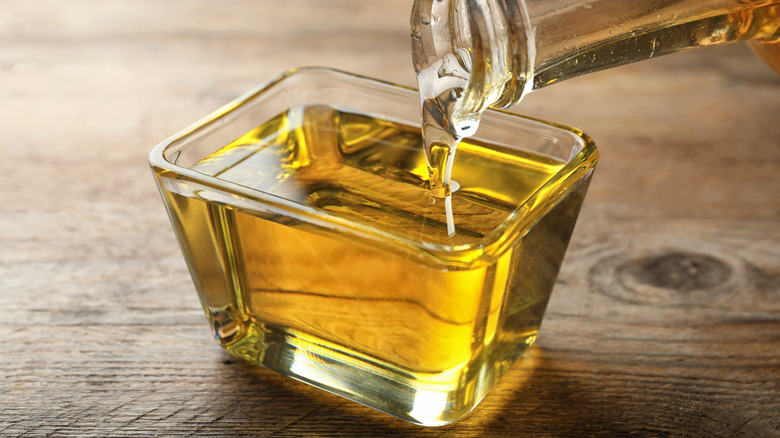This Is The Most Common Oil Used In German Cooking
From sauerbraten to spätzle, one oil reigns supreme in German kitchens, and you may already have a bottle in your pantry. According to DW, Germany's most popular cooking oil comes from the seeds of a bright yellow flowering member of the Brassicaceae family, a clan that also includes mustard, cabbage, broccoli, cauliflower, and turnips. Known as rapeseed oil, this light and delicate oil is widely used in cooking and baking far beyond the German border.
There are two types of rapeseed oil sold in stores. Standard rapeseed oil, which is often labeled vegetable oil, and cold-pressed rapeseed oil, which is sometimes labeled premium, virgin, or extra-virgin. Flavor varies depending on the vineyard and age of the oil, but all varieties work well in sweet and savory dishes, from cakes and cookies to soups, stews, and casseroles. Rapeseed Oil Benefits adds that the multipurpose oil is light, non-greasy, and subtle, making it great for baking because it allows other flavors to shine, including fruit and chocolate. The site showcases rapeseed oil's baking prowess by featuring recipes for carrot cake, biscotti, banana-coconut bread, brownies, scones, and muffins.
So why do we suppose you already have a bottle? If you have a bottle of canola oil, you basically have modified rapeseed oil, and considering the global canola oil market is expected to reach $48 billion by 2027 (per Global News Wire), we're guessing it'll make its way into your pantry if it hasn't already.
What's the difference between canola oil and rapeseed oil?
The Kitchn explains that, in the 1970s, Canadian scientists created canola oil through plant cross-breeding, a process that removed two unfavorable components of the rapeseed plant — glucosinolates and erucic acid. While small doses of erucic acid are safe for consumption, higher doses may lead to heart issues (per Medical News Today). High intake of glucosinolates can also lead to serious health issues, including gastrointestinal and kidney problems (per Science Direct).
The oil was dubbed "canola," for "Canada" and "ola" (oil), and is now used around the world in roasting, sautéing, deep-frying, baking, and in marinades, dips, sauces, and salad dressings (via WebMD). And because the oil has a high smoke point, it's an excellent option for high-heat cooking like frying and roasting. BBC Good Food adds that rapeseed oil has a "delicate but pleasant taste," so it can be enjoyed cold, as a dressing or dip.
The Great British Chefs have found countless ways to utilize resourceful rapeseed oil, from fragrant basil pesto to garlicky mayonnaise, rich chocolate pudding and chocolate ganache, crispy fish and chips, satiny barbecue sauce, and moist sponge cake.
Healthline states that both rapeseed and canola oils are high in unsaturated fats (just one gram of saturated fat per tablespoon) and vitamin E, a powerful antioxidant that promotes skin and eye health. In addition, both oils contain healthy omega-3 and omega-6 fatty acids (and in the proper ratio), which support overall heart health.

